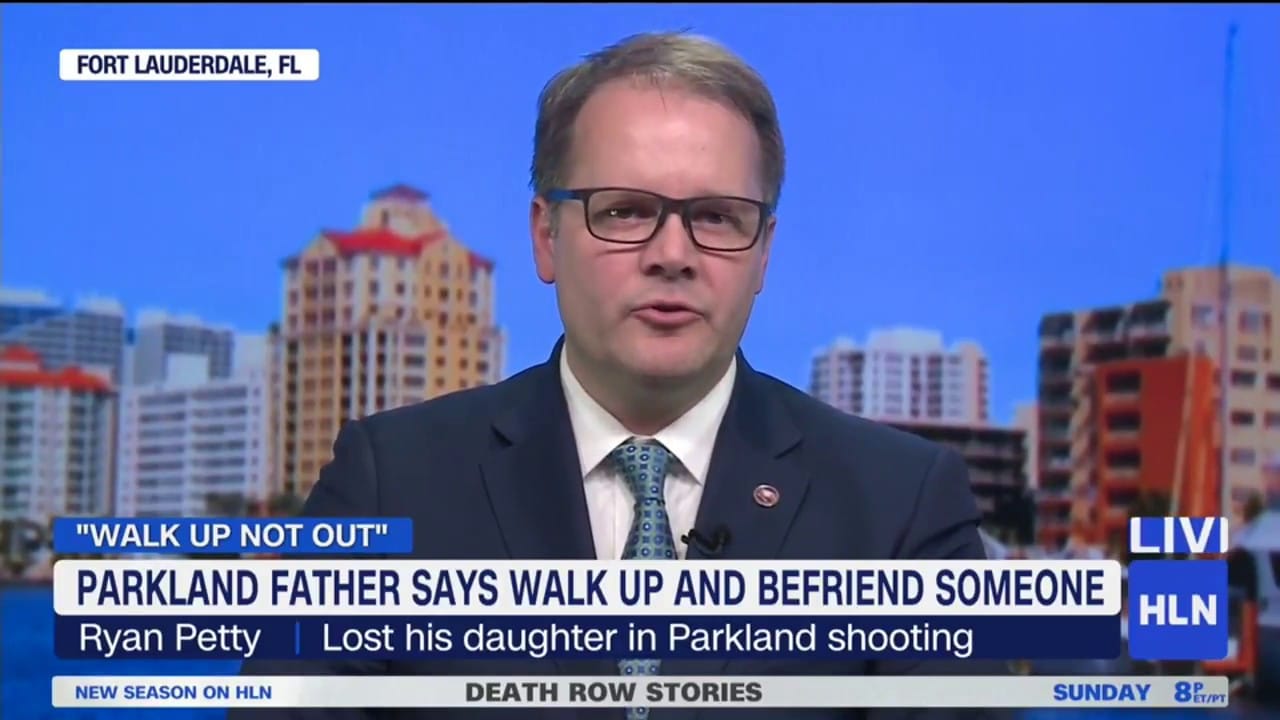In Defense of WalkUp My Segment on the Michaela Show on HLN

Yesterday I had an opportunity to talk about #WalkUp on national TV. I was invited to be on the Michaela Pereira show on @HLNTV. The idea behind #WalkUp is not mine. In fact, I saw it on a Facebook post from a friend of a friend. Here is what inspired me:
Instead of walking out of school on March 14, encourage students to walk up — walk up to the kids who sits alone at lunch and invite him to sit with your group; walk up to the kids who sits quietly in the corner of the room and site next to her, smile and say Hi; walk up to the kid who causes disturbances in class and ask how he is doing; walk up to your teachers and thank them; walk up to someone who has different view that you and get to know them – you may be surprised at how much you have in common. Build own that foundation instead of casting stone. I challenge students to find 14 students and 3 adults to walk up to and say something nice in honor of those who died in (Parkland) FL on the 14th of February. But you can start practicing now! #walkupnotout
The controversy that led to my invitation to be on HLN started when I posted this on Twitter:
The #March4OurLives supporters will accomplish only two things. 1. They'll exercise their 1st Amendment right. 2. They'll get a little exercise. If you really want to stop the next school shooter #walkupnotout pic.twitter.com/9kY3k53xcr
— Ryan Petty (@rpetty) March 13, 2018
It seems almost unbelievable to me that we as a society would debate the importance of being kind. Unfortunately, the #WalkUp movement is often misunderstood and mischaracterized, sometimes purposely so. I’ve seen several attempts to label #WalkUp as “victim blaming” or misrepresenting the impact that being kind can have on a disaffected and potentially violent youth. Do I believe that the shooter at Marjory Stoneman Douglas could have been stopped if the students had been more kind to him? Of course not. In meetings last week with the Director of the Secret Service and the head of the National Threat Assessment Center (NTAC), apart of the Secret Service, I learned that there is a path along which disaffected & troubled youth travel called a “Continuum of Violence”. A few of the key findings & implications are:
Students who engaged in school-based attacks typically did not “just snap” and then engage in impulsive or random acts of targeted school violence. Instead, the attacks examined under the Safe School Initiative appeared to be the end result of a comprehensible process of thinking and behavior: behavior that typically began with an idea, progressed to the development of a plan, moved on to securing the means to carry out the plan and culminated in an attack.
An important element in preventing these attacks is information that can be provided by students. These are often key pieces of a puzzle when pieced together can aid school officials and law enforcement in stopping the attack.
First and foremost, this finding suggests that students can be an important part of prevention efforts. A friend or schoolmate may be the first person to hear that a student is thinking about or planning to harm someone. Nevertheless, for a variety of reasons, those who have information about a potential incident of targeted school violence may not alert an adult on their own. Schools can encourage students to report this information in part by identifying and breaking down barriers in the school environment that inadvertently may discourage students from coming forward with this information. Schools also may benefit from ensuring that they have a fair, thoughtful and effective system to respond to whatever information students do bring forward. If students have concerns about how adults will react to information that they bring forward, they may be even less inclined to volunteer such information.
By fostering an atmosphere of kindness as embodied in the #WalkUp movement, imagine the impact a student may have after having befriended a troubled classmate and felt if that student felt comfortable sharing that information with an adult. It is not the responsibility of the student to intervene, just to share information, their piece of the puzzle, a piece that could ultimately stop an act of violence before it starts.
Several key findings point to the fact that kids send signals–both directly and indirectly–to others regarding their problems. The boys who engaged in the targeted school violence examined by the Safe School Initiative were not “invisible” students. In fact nearly all of these students engaged in behaviors–prior to their attacks–that caused concern to at least one person, usually an adult, and most concerned at least three people.
This finding highlights the range of behaviors in a student’s life that may be noticeable and that could prompt some additional probing by a caring adult. A student’s family, teachers, friends and others may have information regarding aspects of a student’s behavior that has raised concern.
So, #WalkUp can help change the school culture and create an environment of trust and safety as well enabling the sharing of vital information that could help protect students and teachers at school. If the #WalkUp effort is done early enough on that continuum, a life can be changed in a positive way forever. I’d say it’s worth more than a try.
If you’d like to read more about the research Secret Service has done on making our schools safer, you can find it here: THE FINAL REPORT AND FINDINGS OF THE SAFE SCHOOL INITIATIVE (pdf)



